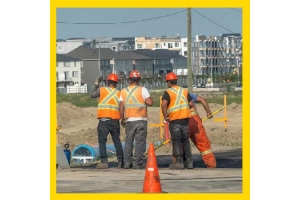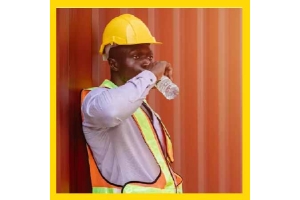Currency
October 04, 2018

I’ve often expressed my opinion regarding the question of “what should safety professionals want from their organizational leaders?”
Most organizational leaders are relatively clear about what they desire from their safety staff, but shouldn’t these same leaders ask what’s needed of them to achieve ongoing EHS success? And shouldn’t safety professionals be clear about what’s needed of organizational leaders to create a culture for safety that’s a major source of organizational pride and performance, especially if that’s part of what our leaders want?
At different levels, safety professionals at corporate, regional, site, or other localized areas need ongoing and active leadership support. So, here’s my top five list – it’s starts big and wide.
My experience and research strongly suggest that a company with a formal vision for safety, or a vision that includes safety in some way is more likely to have greater success. In addition, many organizational leaders should have a desire to express that vision in ways that are readily observable – to give the vision greater clarity and life for those who need to see it and feel it. And an organization’s values, which support the vision, should be well understood and lived out in discernable ways that relate directly to EHS.
As an example, a value such as “integrity” should be talked about and acted out in ways that support the vision. Leaders need to know how their “walk and talk” relates to their organization’s values and their vision. Yes, starting from the top.
For the last several years, I’ve heard more and more conversations from safety professionals who desire to have a seat at the “leadership table.”
Well, certainly to influence strategic matters and tactical issues so that EHS will not be forgotten but becomes an integral part of important decisions that could impact EHS performance, productivity, quality, and morale. EHS professionals who possess credibility (trust x expertise), should either be called to this seat, or work their way to the table by earning it and having others see the need to have them at the table. Finally, maintaining a seat at the table through one’s insight and influence is key to building a great culture for safety.
Part of your organization’s alignment strategy should include measures that hold leaders accountable for actions and activities that will move the EHS needle forward. Accountability metrics for many organizations often remain a touchy subject when it comes to senior leaders holding their peers and others accountable for safety-related actions and activities. However, any way you look at it, to have consistently great safety leadership, accountability measures need to be in place and used.
Mature organizations require that safety-related performance make-up an important part of a leader’s performance reviews, goals, and objectives. And this part of a leader’s review must be recognized as acceptable before moving forward and assessing other individual areas of performance, which in turn, may lead to career advancement, pay increases, and bonuses.

A substantial budget for EHS is one thing, but having a budget that supports critical aspects of your culture is another. I’m thinking about your reporting systems and related tools, BBS, physical improvements, leadership and other value-added training, serious incident and fatality-related programs and processes, or analytic platforms that allow for increasingly focused interventions – all very important.
These kinds of resources are likely to become a staple for higher levels of achievement. Sustaining EHS success through appropriate resources should be viewed as critical to the health of an organization and the productivity of the workforce. Having appropriate resources should also free up EHS professionals to focus on building relationships through EHS, affording greater opportunities to sell and integrate the EHS vision, embedding it more deeply into the operations.
Adequate EHS resources and a budget are very important, and yes, this could fall under that topic. But having the time to bring people together to bond and to celebrate success is independently valuable. Celebrating and having fun while tying safety performance and actions into the celebrations allow leaders to talk about their organizational vision and values in descriptive and actionable ways, which further helps to strengthen overall EHS alignment and sustainability.
Periodic and meaningful celebrations, small and large, are effective ways to show leadership support and discuss concrete actions that have led to successes, and the celebrations that are occurring. Celebrating various safety achievements helps to strengthen the types of everyday actions that are most desirable, and for aligning activities that further help to support long-term success and the building of a great culture for safety.
Tom Peters said it, “Excellent firms don’t believe in excellence - only in constant improvement and constant change.” No matter where you and your leaders are in your journey of EHS improvement, these five areas provide a means for ongoing advancement and achievement.
Most organizational leaders are relatively clear about what they desire from their safety staff, but shouldn’t these same leaders ask what’s needed of them to achieve ongoing EHS success? And shouldn’t safety professionals be clear about what’s needed of organizational leaders to create a culture for safety that’s a major source of organizational pride and performance, especially if that’s part of what our leaders want?
At different levels, safety professionals at corporate, regional, site, or other localized areas need ongoing and active leadership support. So, here’s my top five list – it’s starts big and wide.
1. A Vision That’s Embraced and Lived
My experience and research strongly suggest that a company with a formal vision for safety, or a vision that includes safety in some way is more likely to have greater success. In addition, many organizational leaders should have a desire to express that vision in ways that are readily observable – to give the vision greater clarity and life for those who need to see it and feel it. And an organization’s values, which support the vision, should be well understood and lived out in discernable ways that relate directly to EHS.
As an example, a value such as “integrity” should be talked about and acted out in ways that support the vision. Leaders need to know how their “walk and talk” relates to their organization’s values and their vision. Yes, starting from the top.
2. A Seat at The Table
For the last several years, I’ve heard more and more conversations from safety professionals who desire to have a seat at the “leadership table.”
But why?
Well, certainly to influence strategic matters and tactical issues so that EHS will not be forgotten but becomes an integral part of important decisions that could impact EHS performance, productivity, quality, and morale. EHS professionals who possess credibility (trust x expertise), should either be called to this seat, or work their way to the table by earning it and having others see the need to have them at the table. Finally, maintaining a seat at the table through one’s insight and influence is key to building a great culture for safety.
3. Accountability Measures with Teeth
Part of your organization’s alignment strategy should include measures that hold leaders accountable for actions and activities that will move the EHS needle forward. Accountability metrics for many organizations often remain a touchy subject when it comes to senior leaders holding their peers and others accountable for safety-related actions and activities. However, any way you look at it, to have consistently great safety leadership, accountability measures need to be in place and used.
Mature organizations require that safety-related performance make-up an important part of a leader’s performance reviews, goals, and objectives. And this part of a leader’s review must be recognized as acceptable before moving forward and assessing other individual areas of performance, which in turn, may lead to career advancement, pay increases, and bonuses.

4. Resources for Sustainability
A substantial budget for EHS is one thing, but having a budget that supports critical aspects of your culture is another. I’m thinking about your reporting systems and related tools, BBS, physical improvements, leadership and other value-added training, serious incident and fatality-related programs and processes, or analytic platforms that allow for increasingly focused interventions – all very important.
These kinds of resources are likely to become a staple for higher levels of achievement. Sustaining EHS success through appropriate resources should be viewed as critical to the health of an organization and the productivity of the workforce. Having appropriate resources should also free up EHS professionals to focus on building relationships through EHS, affording greater opportunities to sell and integrate the EHS vision, embedding it more deeply into the operations.
5. Time for Celebrating Success
Adequate EHS resources and a budget are very important, and yes, this could fall under that topic. But having the time to bring people together to bond and to celebrate success is independently valuable. Celebrating and having fun while tying safety performance and actions into the celebrations allow leaders to talk about their organizational vision and values in descriptive and actionable ways, which further helps to strengthen overall EHS alignment and sustainability.
Periodic and meaningful celebrations, small and large, are effective ways to show leadership support and discuss concrete actions that have led to successes, and the celebrations that are occurring. Celebrating various safety achievements helps to strengthen the types of everyday actions that are most desirable, and for aligning activities that further help to support long-term success and the building of a great culture for safety.
Tom Peters said it, “Excellent firms don’t believe in excellence - only in constant improvement and constant change.” No matter where you and your leaders are in your journey of EHS improvement, these five areas provide a means for ongoing advancement and achievement.









